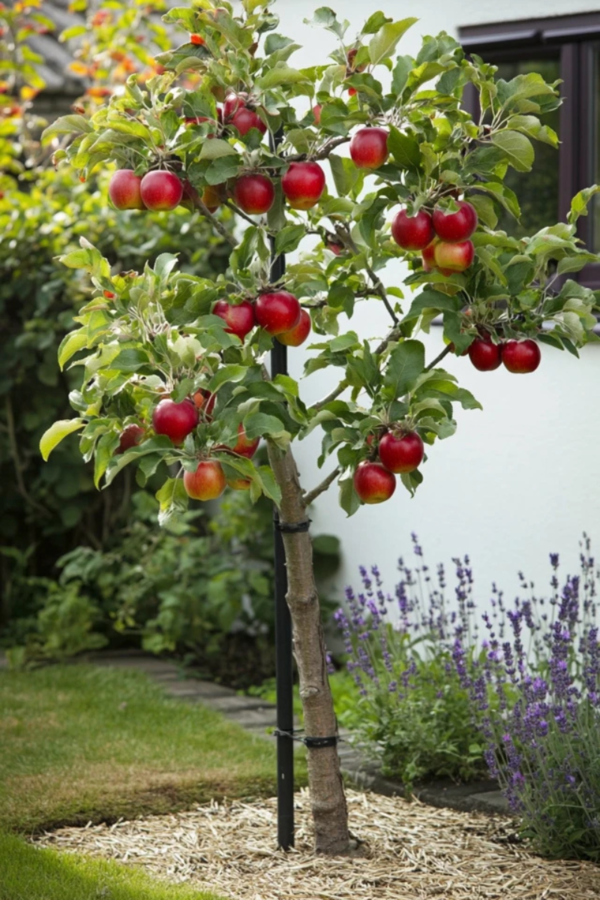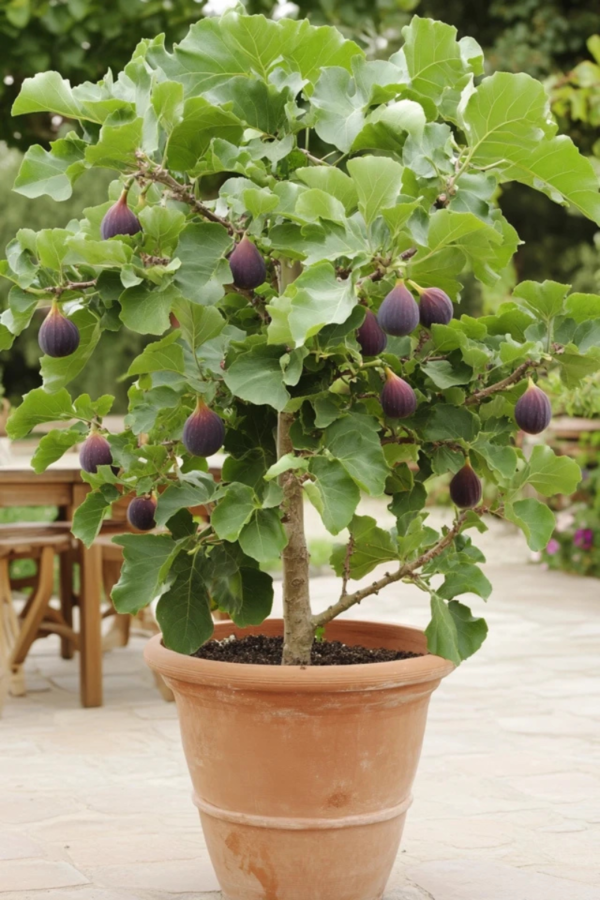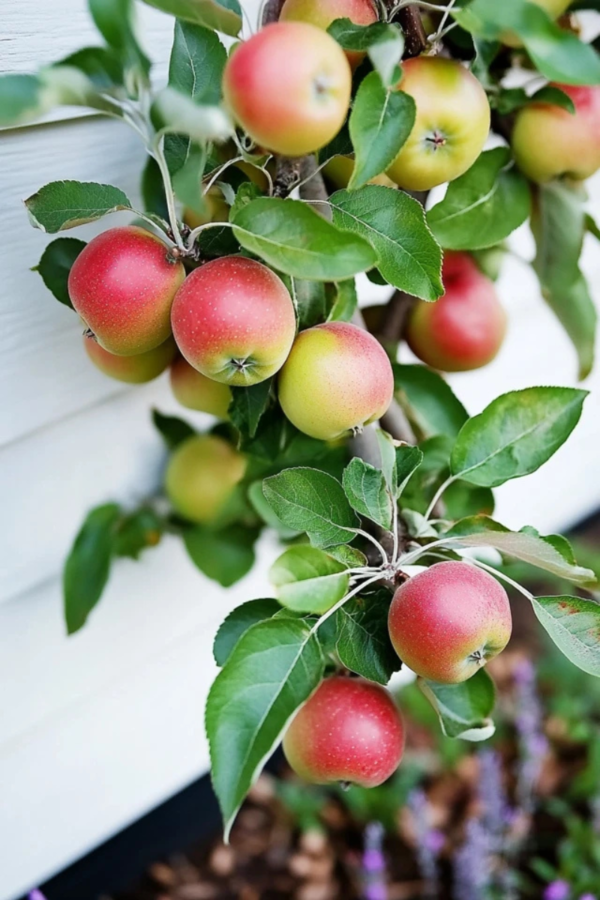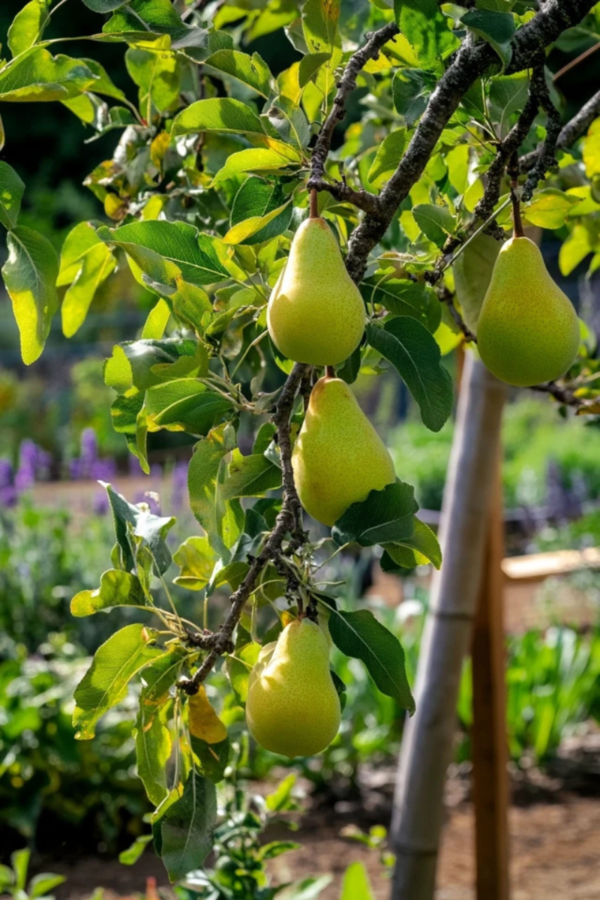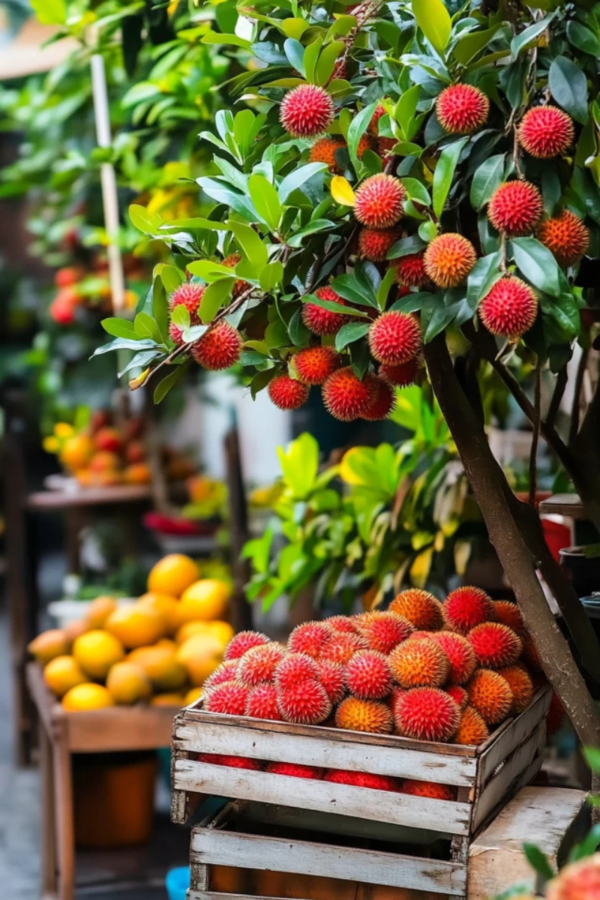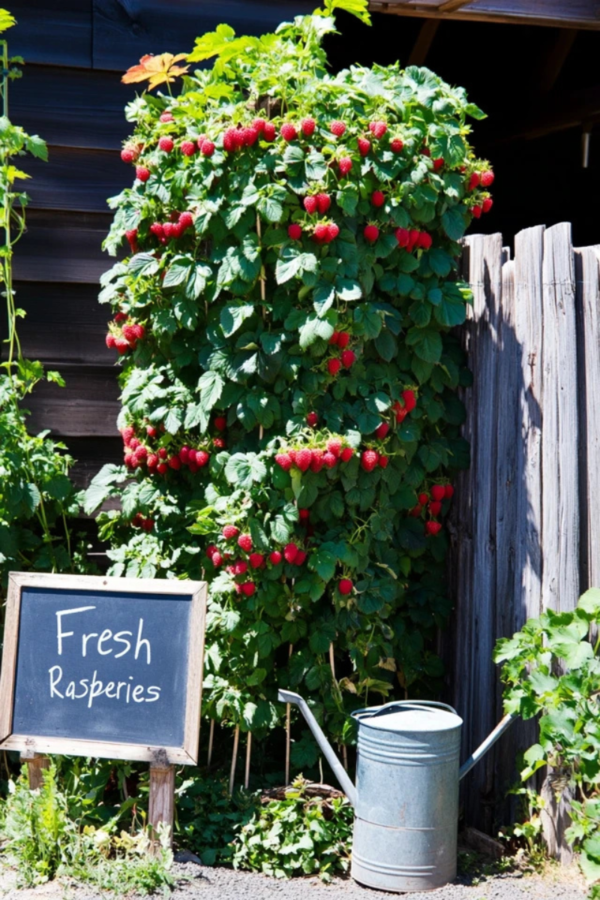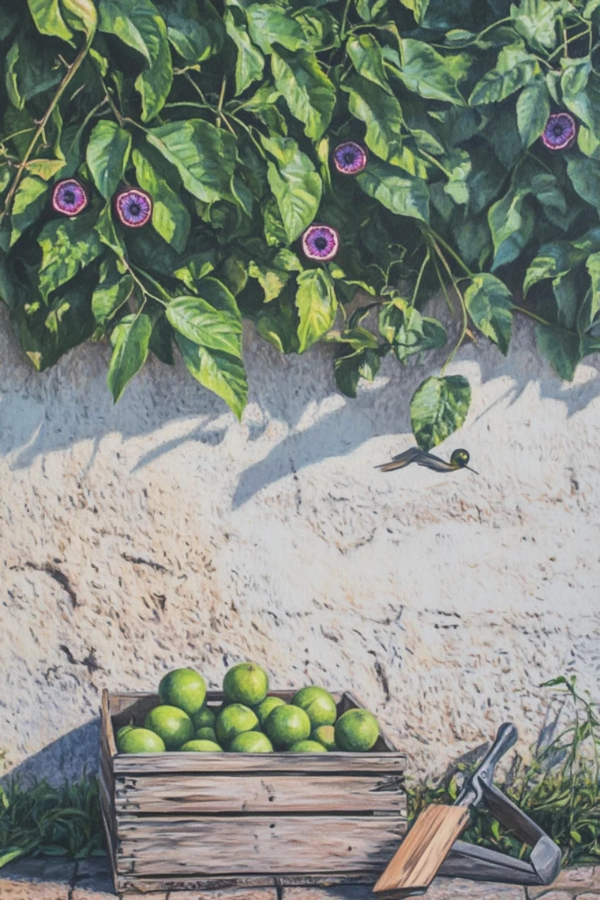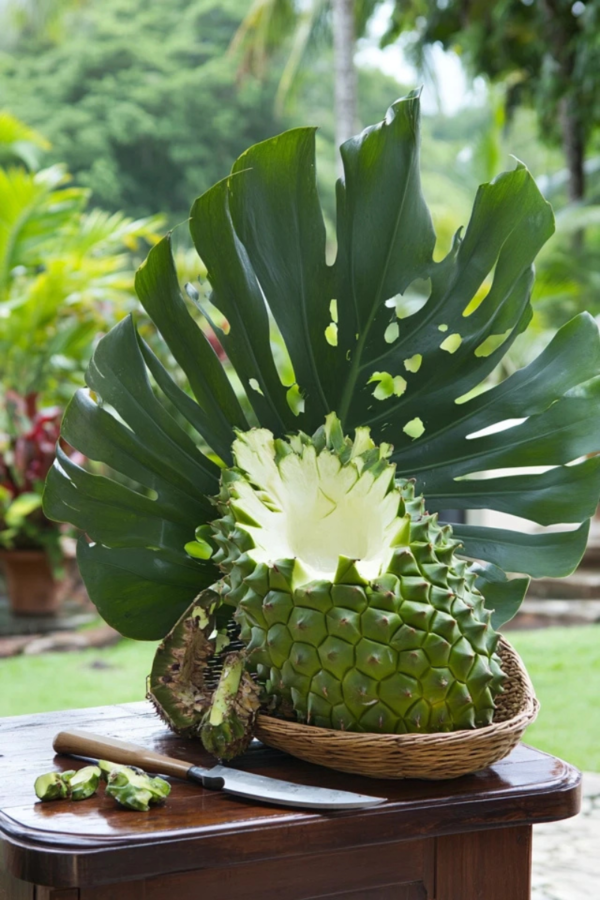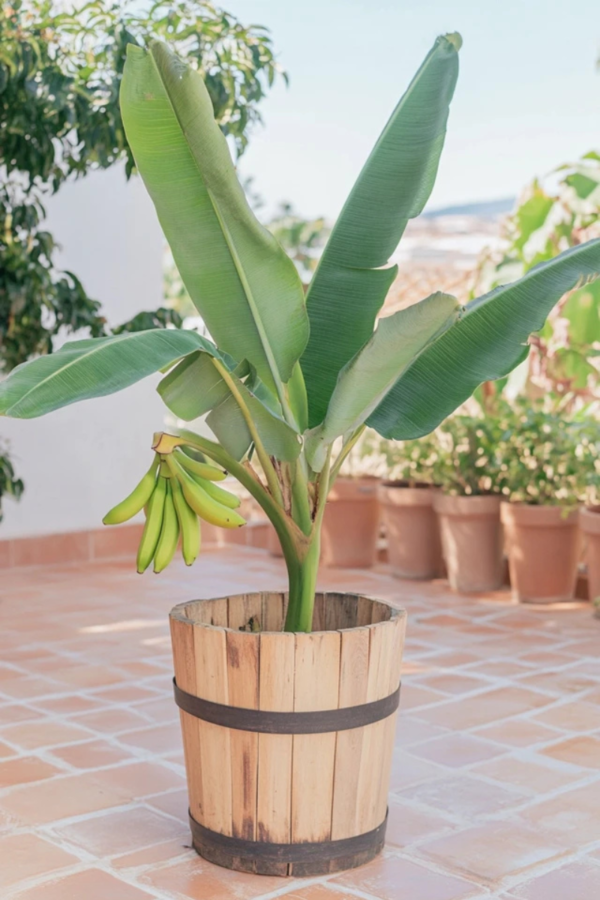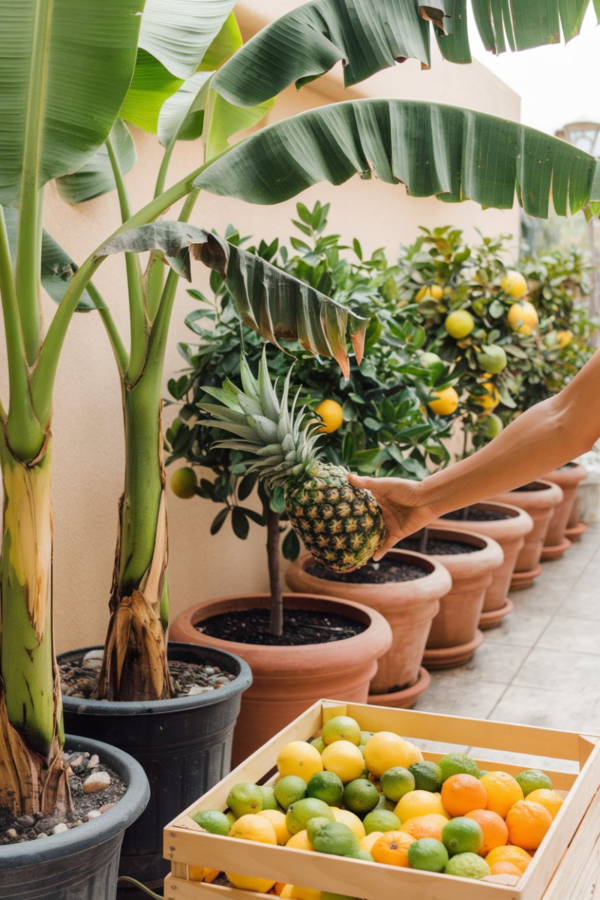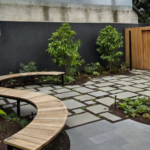Alright. It’s happening. I’m attempting fruit trees. A bold move, considering my gardening history reads more like a cautionary tale than a success story. Picture overcrowded beds, plants battling for sunlight like it’s a gladiator match, and peppers so spicy they may have permanently altered the atmosphere.
And yet… here we are.
I’ve researched. I’ve prepped. I’ve fully accepted that my wife is already laughing at me. She’s seen this movie before—me, enthusiastically planting things, only to watch them shrivel up like a raisin in the sun. But this time? I have a plan. A beginner-friendly, low-maintenance, “even I can’t mess this up” plan.
Fruit trees are the ultimate hands-off gardening move. You plant them, leave them alone, and they do the work. No obsessive watering. No daily pep talks. Just trees, doing their thing, gifting you actual food. If you’re excited but slightly worried about your ability to keep plants alive, this list is for us.
Let’s do this. And yes, I’ll be roasting myself along the way.
Fruit Trees: The MVPs of the Backyard (or Patio, or Balcony, or Wherever You’re Making This Happen)
Fruit trees are for the people. They require minimal effort compared to, say, an entire vegetable garden that needs constant supervision like a toddler with a juice box near a white couch. Trees? They grow, they do their thing, and if you get the right ones, they’ll produce so much fruit that you’ll be handing it out like a 19th-century apple salesman.
Apple Trees: The MVP of the Home Orchard
Apple trees are unreasonably rewarding for how little work they require. Plant it, give it some sunshine, and boom—free apples. The most effort you’ll put in is deciding whether to bake a pie or just flex on your neighbors with your literal homegrown fruit empire.
Best Apple Varieties for Beginners:
- Fuji & Honeycrisp – Sweet, crisp, and basically the golden retrievers of apple trees—friendly, forgiving, and impossible not to love.
- Gala – Produces a ridiculous amount of fruit, perfect if you enjoy feeling productive without doing much.
- Enterprise – Disease-resistant because, let’s be honest, I will forget to check for bugs.
How to Grow an Apple Tree in a Small Garden:
- Dwarf apple trees exist, and they are the superior option for small spaces. They grow in pots, don’t take up much room, and still give you the same amount of smugness when you harvest apples.
- Pollination matters! Apples are team players—plant at least two different varieties so they can cross-pollinate and live their best lives.
Espalier Methods for Compact Spaces:
This is a fancy word for training a tree to grow flat against a wall or trellis. It looks insanely cool, saves space, and makes it seem like you definitely know what you’re doing, even if your current expertise level is “watched a few YouTube videos.”
Pear Trees: The Chillest, Most Low-Maintenance Tree You’ll Ever Meet
Pears are unbelievably easy to grow. If they were a person, they’d be the laid-back friend who never causes drama and always shows up with snacks.
Why Pears Are One of the Easiest Fruit Trees to Grow:
- They’re basically self-sufficient—plant them and check in occasionally like a cool landlord.
- Drought-resistant, so if you forget to water them for a while (whoops), they’ll shrug it off and keep growing.
- Bugs love pears, but Kieffer pears fight back like the tree version of an action hero.
Best Varieties for a Backyard Orchard:
- Bartlett – Classic, juicy, and basically the Beyoncé of pears.
- Kieffer – Extra hardy, perfect if you’re the type of gardener who forgets they planted something.
- Moonglow – Disease-resistant and makes you sound fancy when you tell people you grow “Moonglow pears.”
Fig Trees: The Unbothered, Thriving-in-Any-Condition Fruit Tree
Figs are for people who want maximum results with the least amount of effort. They grow fast, they’re ridiculously forgiving, and they make it look like you have your life together.
Why Fig Trees Thrive in Home Vegetable Gardens:
- Tolerates poor soil, heat, and occasional neglect.
- They don’t need pollinators, so they’re like an independent queen—no help required.
- Grow them in pots if you’re working with limited space or want to move them around like a fruit-based game of chess.
Peach & Plum Trees: The Overachievers of the Fruit World
If patience isn’t your thing (same), peach and plum trees are here to reward your need for instant gratification. These trees grow fast and produce fruit like they’re in a competition with themselves.
Peach vs. Plum—Which One Should You Get?
- Peach Trees: Best for warm climates, loves sunshine and admiration.
- Plum Trees: More adaptable to different climates and less likely to throw a fit if conditions aren’t perfect.
Growing Tips for a Messy Garden Aesthetic:
Peach and plum trees are not subtle. They’ll spread out, drop fruit everywhere, and grow in whatever direction they please. But if you love that overgrown, cottage garden vibe, they’re perfect.
Citrus Trees: The “Look at Me, I Grow My Own Lemons” Flex
Citrus trees are not shy. They grow fast, they smell incredible, and they make your yard look one step away from an Italian villa.
How to Grow a Lemon Tree in a Container:
- Pick a dwarf variety like Meyer lemon and stick it in a big pot.
- They love full sun, so balcony, patio, or right by a big window is ideal.
- Water regularly but don’t drown them—they’re dramatic about soggy roots.
Best Varieties for a Wall Garden or Vertical Ladder Setup:
- Meyer Lemon – Forgiving, productive, and just happy to be here.
- Calamondin Orange – Tiny, adorable, and surprisingly easy to grow indoors.
- Limequat – A lime-kumquat hybrid that’s as fun to grow as it is to say.
Mulberry Trees: Fast Growth & Bountiful Harvests
Mulberry trees are like the kids in class who hit a growth spurt overnight. One minute, they’re tiny. The next, they’re towering over everything, dropping berries like they’re making it rain fruit. These trees grow ridiculously fast, need barely any attention, and will drown you in sweet, juicy berries year after year. They’re the kind of tree that just keeps on giving… and giving… and giving.
A Perfect Fit for Farm Gardens
If your gardening style is “plant it and hope for the best”, mulberries are your dream come true. They’ll thrive in lousy soil, laugh in the face of drought, and ignore most pests. This is the kind of tree that belongs in farm gardens, backyard orchards, or anywhere that needs a big, happy tree doing its thing. It’s like nature’s version of an overenthusiastic golden retriever—big, lovable, and constantly offering gifts (except instead of slobbery tennis balls, you get fruit).
Why Mulberry Trees Are Ideal for Beginner Food Gardens
If you’re a first-time fruit grower, start here. Mulberries make it so easy, it almost feels like cheating.
- Crazy fast growth – You won’t be waiting a decade for fruit
- No drama – Doesn’t care if the soil is a mess or if you occasionally forget to water
- Huge harvests – You’ll be swimming in berries before you know it
- Bird magnet – If you love watching wildlife, this tree is like an all-you-can-eat buffet for them
If you’re short on space, grab a dwarf mulberry tree and grow it in a container. If you’ve got room, let it spread out and take over your backyard in the best possible way. Either way, you’re about to have more mulberries than you know what to do with.
Pomegranate Plant: The Superfood Powerhouse
Pomegranates are fancy. They just are. They’ve got that jewel-like inside, the deep red color, and the kind of reputation that makes you feel healthier just looking at them. The best part? Growing them is stupidly easy, especially if you live somewhere warm.
The Easiest Way to Grow a Pomegranate Plant in a Fruit Garden
These trees aren’t picky. They can be grown as bushes or trees, handle neglect like a champ, and actually like hot, dry conditions. If you’re the type to accidentally forget about your plants now and then, pomegranates won’t hold a grudge.
- Sun-loving – The more sun, the better
- Low water needs – Thrives even if you don’t drown it in attention
- Small-space friendly – Can be pruned into a compact bush or even grown in large pots
- Tough as nails – Survives in poor soil, high heat, and general neglect
Why Pomegranates Belong in a Home Vegetable Garden
Aside from the fact that they’re delicious and basically a superfood, pomegranates bring a few bonus perks to the garden.
- Pollinator heaven – Bees and hummingbirds can’t get enough of those bright orange flowers
- Natural privacy screen – Plant a row, and boom, free hedge
- Health powerhouse – Full of antioxidants, vitamins, and a general sense of feeling like you’ve got your life together
If you’ve got the space, toss a pomegranate plant into your fruit and veggie garden. It fits right in with berries, citrus trees, or even espalier fruit trees if you’re feeling fancy. Just be ready for the absolute mess you’ll make cracking them open… but honestly? Worth it.
Durian Tree (Pohon Durian): The King of Fruits
Durian is the most controversial fruit on the planet, and honestly, it knows it. People either love it or run away gagging, but no one forgets it. The smell? Legendary. The taste? Wildly unique. The tree? An absolute beast if you have the space and patience to grow it.
Growing a Durian Tree in Tropical Climates
Durian trees don’t mess around. They’re big, dramatic, and demand full commitment. If you’re not in a tropical climate, don’t even try. They need heat, humidity, and a whole lot of patience. But if you’ve got the right conditions? You’re in for a wild ride.
- Loves the heat – Needs warm, humid conditions year-round
- Thirsty but picky – Wants regular moisture but hates standing water
- Takes its time – Can take 5-7 years to produce fruit
- Massive trees – Can grow huge, so plan accordingly
Growing durian is not for the faint of heart, but if you stick with it, you’ll have one of the most expensive and sought-after fruits on Earth—right in your backyard.
How Buah Rambutan Pairs Well in a Fruit and Vegetable Garden
Now, if you’re going full tropical, you might as well go all in. Rambutan is like durian’s way friendlier cousin—easy to grow, fast-producing, and with zero terrifying odor. These two trees love the same conditions, so if you’re planting durian, might as well throw in some rambutan for variety.
- Grows faster than durian – About 3-4 years to start producing
- Same tropical love – Needs heat, humidity, and space
- Looks stunning – Creates that lush, tropical aesthetic that makes you feel like you live in Bali
- Tastes incredible – Like a lychee but even better
Durian is the king, but rambutan is the best friend that makes everyone feel comfortable. Grow them together, and you’ll have a fruit garden straight out of a tropical paradise. Just maybe warn your neighbors before you start cracking open durians…
Berry Bushes: Small But Mighty Fruit Machines
Berry bushes are the snack machines of the backyard. Except instead of eating up your quarters, they spit out free fruit with almost zero effort. No long waits. No fussy maintenance. Just little, overachieving plants pumping out berries like they’re on commission.
Tiny yard? No problem. No gardening skills? Even better. If you want to feel like a homegrown fruit wizard while putting in the effort level of a houseplant owner, berries are your people.
Strawberries: The Overachievers of the Fruit World
If strawberries were students, they’d be that kid in class who finishes their homework before the teacher even explains it. Fast, productive, way too eager, and honestly? Pretty fun to have around.
- Grows anywhere – Raised beds? Hanging buckets? An old shoebox filled with dirt? They’ll thrive.
- Zero patience required – Some fruits make you wait literal years before they produce. Strawberries are not here for that nonsense. Plant them now, and you’ll be eating homegrown berries in a few months.
- They multiply like crazy – Once happy, they send out runners and make more strawberry plants like a fruit-producing army.
You’ll go from “I hope I can grow something” to “What am I supposed to do with all these strawberries?!” in record time.
Raspberries: The Aesthetic Drama Queens
Raspberries are the Instagram influencers of the garden. Pretty, dramatic, effortlessly thriving, and guaranteed to make your backyard look like a cottagecore dream.
- Thrives anywhere – Trellis, fence, random corner of your yard? Raspberries will take over like they own the place.
- Effort level: Low. Harvest level: Insane. – Once they start producing, you’ll have so many raspberries that your freezer will file a complaint.
- Berries that taste like summer – Juicy, sweet, and way better than the overpriced ones at the store.
Warning: If you don’t harvest them fast enough, birds will. They are obsessed. You will lose all privacy as they shamelessly invade your yard for free snacks.
Blueberries & Blackberries: The Odd Couple of the Berry World
Blueberries and blackberries are hilariously different, but they work so well together. One is a tiny, polite shrub that stays in its lane. The other is a wild, sprawling vine that grows like it has something to prove.
- Blueberries are the responsible ones – They need acidic soil, but if you give them what they want, they’ll reward you with perfect little berries year after year.
- Blackberries are the rebellious ones – They do not care about soil quality, watering schedules, or personal space. They will grow. A lot. And they will not apologize.
- Both are ridiculously productive – Once they get going, you will be swimming in fruit. Hope you like making jam.
Blackberries are like that friend who refuses to make plans but always shows up with snacks. Blueberries are the quiet perfectionist who gets straight A’s. Together? Absolute berry chaos in the best possible way.
Gooseberries & Currants: The Nerdy Throwback Superstars
You know those old-timey recipes that call for fruit no one has seen in real life? That’s these guys. Gooseberries and currants have been garden staples for centuries, but they’ve somehow become the forgotten geniuses of the fruit world.
- Basically indestructible – They grow in cooler climates, ignore bad weather, and require almost zero effort.
- Ridiculously healthy – More vitamin C than oranges, but without the drama of citrus trees.
- Perfect for jams, pies, and making you feel fancy – Imagine casually telling people you grow currants. They will assume you are sophisticated.
Growing these instantly gives you vintage gardener vibes. You will feel 500% fancier. Tea-drinking levels of fancy. Monocle-wearing levels. Grow them. Impress yourself.
Berry Bushes = Low Effort, Big Wins
If you like fresh fruit but don’t want to work for it, berries are the cheat code. Tiny space? No problem. No patience? Even better. These little guys practically take care of themselves, look amazing, and turn you into a berry-harvesting legend without even trying.
And let’s be real—nothing feels more powerful than walking into your own yard, picking fresh berries, and eating them immediately. That’s the dream. And you’re about to live it.
Adding berries to your fruit garden is a no-brainer—they’re easy, productive, and look amazing! But if you’re expanding beyond berries and thinking about veggies or flowers, you’ll love this spring gardening guide packed with planting tips for the season. See the full checklist here!
Vining & Compact Fruit Plants: Big Yields, Tiny Footprint
Vining fruit plants are the underdogs of the garden. They don’t take up much space, they climb instead of sprawl, and they’re out here turning fences, walls, and trellises into full-on snack stations. Got a small yard? These plants could not care less. Give them a vertical structure, and they’ll take it from there.
Some vines grow fast enough to make you question reality (cough kiwi cough). Others produce so much fruit you’ll be handing out homegrown grapes like you’re running a farmer’s market. And if you’ve ever wanted a passionfruit jungle or watermelons climbing your fence like they pay rent, buckle up—it’s happening.
Grapes: The Ultimate Vertical Fruit
Grapes are straight-up iconic. They’ve been grown for thousands of years, used in everything from wine to jelly, and they’re still one of the best crops for a small-space garden.
- Climbs like an over-caffeinated rock climber – Give them a trellis, fence, or a fruit tower, and they’ll take off.
- Best varieties? Depends on your vibe. Want fresh table grapes? Go for Concord or Thompson Seedless. Dreaming of homemade wine? Cabernet Sauvignon, baby.
- Minimal effort, massive results – Once established, grapes basically run on autopilot.
Pro tip: If you train your grapevines on a vertical ladder or trellis, you’ll feel like an absolute vineyard owner every time you step outside. Bonus points if you casually mention “my vineyard” in conversation.
Kiwi: The Speed Demon of the Vine World
Kiwi vines grow so fast, you’ll start wondering if they have a personal vendetta against empty space. These things explode with growth, making them perfect for backyard orchards, fences, or trellises that need some action.
- Best trellis setups? The bigger, the better. These vines don’t mess around. They want height, width, and room to spread.
- Hardy kiwi vs. traditional kiwi? Choose wisely. Hardy kiwi (Actinidia arguta) survives cold winters and has smooth, bite-sized fruit. Traditional kiwi (Actinidia deliciosa) needs warmth and grows the classic fuzzy kiwis you know and love.
Kiwi is basically the overenthusiastic extrovert of the garden. It needs support, grows like crazy, and wants to be in everyone’s business. But at the end of the season? You’re swimming in homegrown kiwi.
Passionfruit: The Low-Maintenance Exotic
Passionfruit vines make you feel like you live in a tropical paradise—even if your backyard is more “suburban driveway” than “Caribbean retreat.” These beauties thrive on walls, trellises, and fences, climbing fast and covering ugly spaces with lush greenery.
- Grows well in wall gardens – Got a blank fence? Boom. Instant passionfruit jungle.
- Loves companion plants – Pair it with citrus, bananas, or even kiwi for a full-on fruit party.
Passionfruit makes it way too easy. You plant it. It grows aggressively. Then, boom, you’ve got tropical fruit right outside your door. Oh, and if you’ve never tried fresh passionfruit? It tastes like somebody turned a vacation into a fruit.
Watermelon & Cantaloupe: Ground Sprawlers That Can Climb
Watermelon and cantaloupe are not vines in the way grapes and kiwi are, but they will take over your garden like they own the place. They sprawl like toddlers on a sugar rush unless you trick them into going vertical.
- Train them up a vertical trellis – Yes, you can grow melons vertically. Just support the fruit with DIY slings (old T-shirts, pantyhose—get creative).
- Perfect for small-space gardens – Instead of taking over your yard, melons will climb a structure and behave themselves.
If you’ve ever dreamed of pulling a giant watermelon off a trellis, now’s your chance. It’s weird. It’s satisfying. It’s a flex.
Climbing Fruit = Maximum Production, Minimum Space
If you want homegrown fruit but don’t have acres of land, these vines have your back. They climb walls, fences, and trellises instead of taking up ground space, grow fast, and produce so much fruit you’ll feel like a gardening wizard.
Plant them, train them, and let them turn your backyard into a vertical fruit jungle.
Container-Friendly & Small Garden Fruits: Big Flavor, Tiny Space
Just because you don’t have a massive backyard doesn’t mean you can’t grow your own fruit. These plants thrive in containers, fit on patios, and turn the tiniest spaces into full-blown tropical snack bars. Urban homesteading? Tiny backyard? A balcony with commitment issues? No problem.
Some of these fruits are straight-up magical—pineapples that grow from scraps, bananas in a bucket, and Monstera fruit that looks like it was dreamed up by aliens. Get ready to become the person who casually plucks exotic fruit off their porch like it’s no big deal.
Bananas: The Ultimate “Wait, You Can Grow That?” Fruit
People hear “homegrown bananas” and assume you need an entire jungle. Nope. You can literally grow them in a bucket. And they will love it.
- Choose a dwarf variety – You’re not out here trying to grow a full rainforest. Dwarf Cavendish or Super Dwarf varieties will fit in containers and still produce actual bananas.
- Buckets, barrels, or big pots – Bananas like lots of space for their roots. If your container is big enough, you’re golden.
- They grow FAST – One minute, you’ve got a leafy plant. Next thing you know, you’re harvesting your own bananas and feeling like a tropical farmer.
Once they’re settled, they basically take care of themselves. You’ll look out one day and boom, bananas. Your grocery store bill? Lower. Your ego? Higher.
Pineapple: The Ultimate DIY Fruit Plant
Pineapples are the kings of ridiculousness. Why? Because you can grow one from the top of a store-bought pineapple. That’s right. Chop off the top. Stick it in dirt. Boom. You’re a pineapple farmer.
- No seeds, no fancy equipment—just scraps. If you’ve ever thrown away a pineapple top, congrats, you tossed a free plant.
- They thrive in messy garden setups – Got a funky, chaotic little backyard space? Pineapples love it.
- They’re slow, but worth it – Pineapples take about two years to fruit. But hey, it’s a long-term investment in your future self’s snack supply.
Once you grow one? You’ll never stop. Next thing you know, your backyard is filled with pineapples, and your friends are begging for tips.
Monstera Fruit: The Rare Yet Weirdly Simple Exotic
You know Monstera—the big, trendy houseplant that everyone suddenly became obsessed with? Well, it also grows fruit. And that fruit tastes like a tropical candy explosion.
- It’s basically a houseplant with benefits – Grow it indoors, grow it outside, just give it some warmth and humidity, and it’ll be chilling and growing fruit before you know it.
- The fruit looks like a green corn cob – Not even joking. But once it ripens, it’s packed with flavors of banana, pineapple, and mango all at once.
- Patience is required – Monstera fruit takes a while to ripen. If you eat it too early? Prepare for regret. But once it’s ready? Absolute magic.
If you want a weird, conversation-starting plant that gives you both insane aesthetic value AND edible fruit, Monstera is your new best friend.
Rambutan (Buah Rambutan): The Spiky Little Fruit That’s Worth It
Rambutan looks like a fruit designed by a cartoon villain. It’s spiky, bright red, and kind of intimidating—until you crack one open and realize it’s basically a juicy, sweet lychee with better hair.
- Grows best in warm, humid climates – If you’ve got a tropical-ish environment, rambutan will thrive.
- Perfect for backyard orchards – Looks insanely cool mixed in with bananas, mangoes, and citrus.
- The ultimate “what is that?” fruit – Anyone who visits your garden will have questions. You will have snacks.
If you’re going for a tropical fruit garden that makes you feel like you live on a private island, rambutan deserves a spot.
Hacks for a Thriving Fruit & Vegetable Garden
Alright, you’re pumped about fruit. But what if you want even MORE? These simple tricks will maximize space, boost production, and make your garden look way fancier than it actually is.
- Go vertical – Got limited space? Use fruit towers, wall gardens, or espalier trees to keep everything compact but productive.
- Espalier fruit trees – Fancy name, simple concept. It’s just training trees to grow flat against a wall, and it saves SO much space.
- Compost like a boss – Your plants WILL grow better if you give them nutrient-rich soil. DIY composting = free plant food and zero waste guilt.
Sure, fruit trees are fun, but what about a vegetable garden that actually survives? If you’re tired of watching pests turn your tomatoes into their personal buffet or dealing with stubborn plants that refuse to grow, you need these game-changing veggie gardening hacks. Get the secrets to a thriving vegetable garden here!
Your Dream Backyard Orchard Starts NOW
That’s it. You officially have NO excuse not to grow your own fruit. Whether you’ve got a backyard, a balcony, or a weirdly sunny bathroom, there’s a plant that’ll thrive. Start small, plant something fun, and prepare to casually mention your homegrown fruit in every conversation for the rest of time.
Now, tell me—which one are you planting first?



